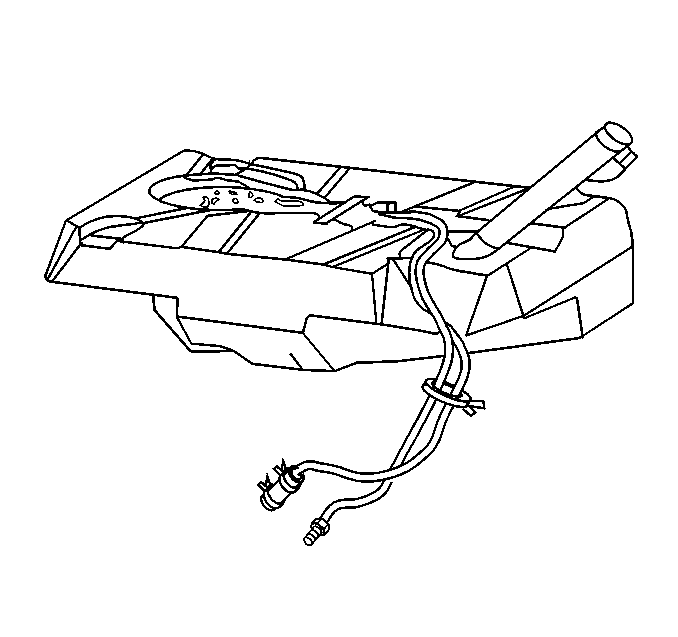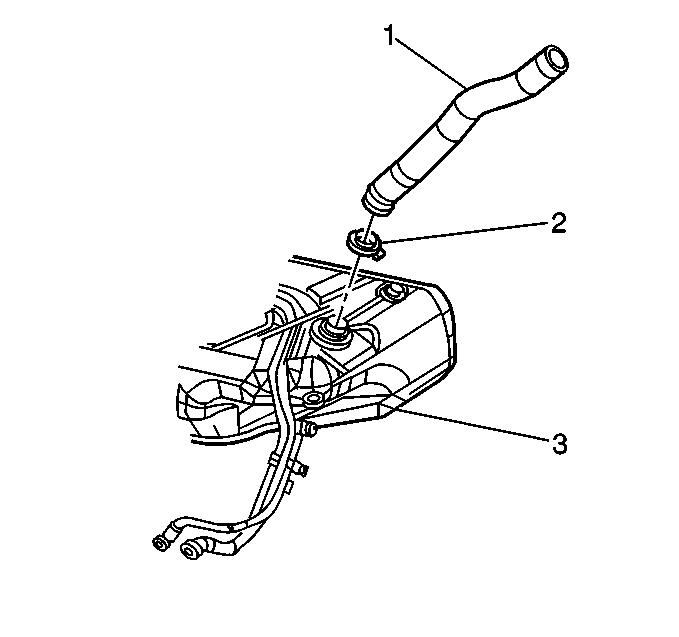To help prevent refueling
with leaded fuel, the fuel filler pipe has a built-in restrictor and deflector.
The opening in the restrictor will accept only the smaller unleaded gasoline
fuel nozzle which must be fully inserted to bypass the deflector. The
filler pipe is attached to the tank by a section of hose and a clamp.
The tank is vented during filling by an internal vent tube inside the
filler pipe.


